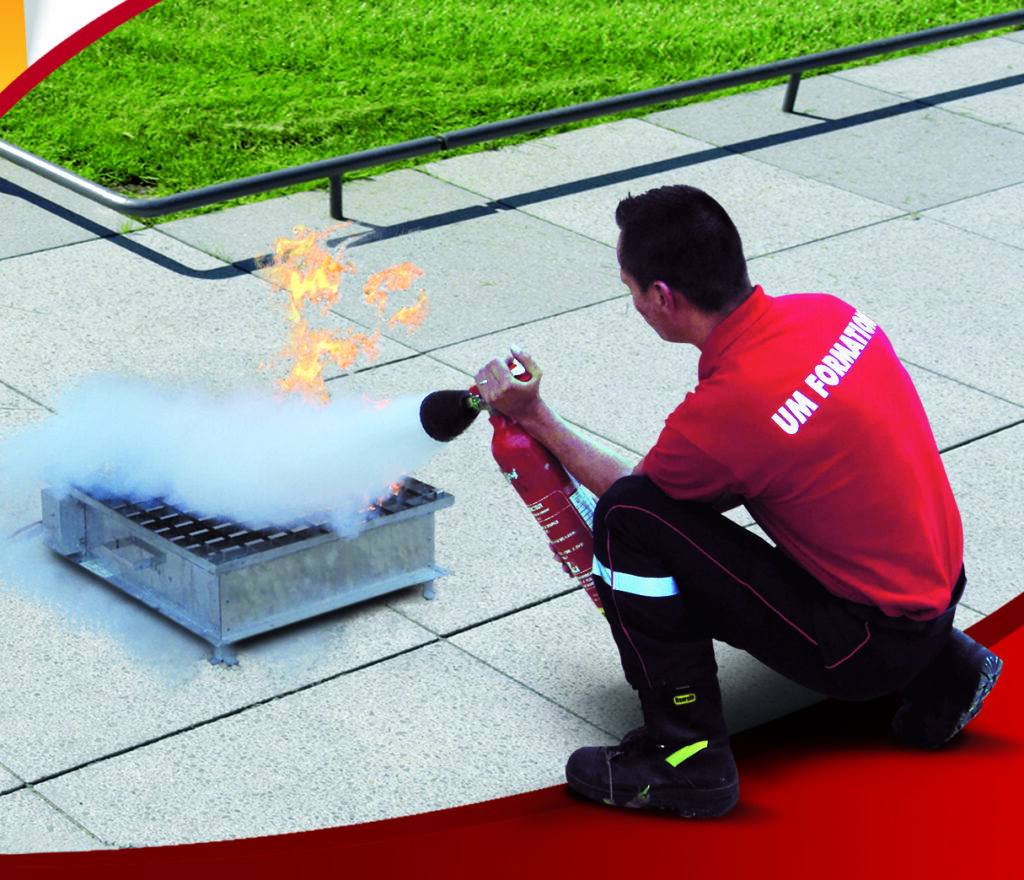What is an ESI?

An ESI, or Equipier de Seconde Intervention, plays a crucial role in fire prevention within companies. Trained in the use of all fire-fighting equipment, they are ready to intervene in the event of an emergency. However, the term "ESI" can also refer to other concepts, such as École Supérieure d'Informatique or École de Ski Internationale. Multiple definitions for an essential acronym. Let's dive into the world of ESI.
Understand the concept of ESI (What is a second intervention team member?).
The second-response team member (ESI) is trained to act after the first-response team members (EPI). Unlike the PPE, whose main role is to sound the alarm and contain the fire in its early stages, the ESI intervenes with more powerful and specialized resources.
Their training includes the use of equipment such as fire hoses and foam generators. They are also trained to manage more complex situations and coordinate with the fire department.
ESIs must meet the following criteria:
- Master advanced extinguishing techniques
- Evacuation procedures
- Be able to carry out reconnaissance and rescue operations
This rigorous preparation guarantees their effectiveness in the event of an incident, reinforcing fire safety within the company.
The importance of ESI in fire safety
First Response Teams (FRTs) are essential to ensuring enhanced fire safety in the workplace. Their intervention helps limit damage and protect employees while awaiting the arrival of emergency services.
IMTs have specific fire-extinguishing skills. They can operate equipment such as fire hoses, foam generators and SCBAs. This expertise enables them to deal effectively with complex situations.
In addition to their technical skills, IMTs must be able to coordinate their actions with the fire department. This includes reconnoitring the scene and implementing strategies to contain the fire.
Ongoing training of IMTs is crucial. This ensures that they are always ready to intervene effectively and safely in the event of a fire.
The role of an ESI in a company
The responsibilities of an ESI
The responsibilities of an Emergency Response Team (ERT) member are diverse and crucial to fire safety. First and foremost, an ESI must master fire-fighting equipment such as hoses, foam generators and SCBAs.
Another important aspect is organization and coordination with the fire department. The IMT must be able to guide the rescue team and provide precise information on the situation.
Tasks also include reconnaissance of the site and implementation of evacuation instructions. In emergency situations, the ESI must be able to manage stress and make rapid, effective decisions.
To ensure optimum response, IMTs must also take part in regular training and disaster simulations. These exercises keep their skills up to date and reinforce their responsiveness to real-life incidents.
The skills required for an ESI
A First Response Team member (FRT) needs a wide range of skills. Mastery of fire-fighting equipment is paramount. This includes the use of fire hoses, foam generators and self-contained breathing apparatus.
It is also essential to be able to work as part of a team and coordinate actions with firefighters. This coordination requires communication and crisis management skills.
IMTs must also be trained to recognize the scene and develop strategies to contain the fire. The ability to quickly assess a situation and make effective decisions is crucial.
Finally, good physical condition is required to carry heavy equipment and work in difficult conditions.
Training to become an ESI
The training required to become a First Response Crew (FRC) consists of several theoretical and practical modules. Future ESIs undergo intensive training, including the use of various fire-fighting equipment.
The main objectives of the course are as follows:
- Master specific equipment such as fire hoses, foam generators and SCBAs.
- Learn techniques for working in polluted and toxic atmospheres.
- Develop skills in crisis management and coordination with the fire department.
In addition, regular practical exercises, such as simulated disasters, are essential to keep ESI's skills up to date. These training courses are often organized on an intra-company basis, to suit the specific needs of each facility. Firefighters also need to be in good physical condition to be able to intervene effectively in the event of a fire.
The tools available to an IST
Second Response Teams (FRTs) have a variety of tools at their disposal to ensure rapid, effective intervention in the event of fire. Commonly used equipment includes :
- Fire hoses: essential for projecting high-pressure water to extinguish flames.
- Foam generators: effective in fighting flammable liquid fires.
- Self-contained breathing apparatus (SCBA): essential for work in smoky or toxic environments.
IMTs also have access to fire hydrants, fire extinguishers (water, CO2, powder) and fire blankets. These tools are regularly checked and serviced to ensure they are in good working order when needed.
What's more, ESIs take part in frequent practical exercises to ensure they are fully conversant with the use of this equipment. These training sessions, often carried out in real-life conditions, help to improve their responsiveness and coordination during interventions.
How do I become an esi?
To become an ESI (Équipier de Seconde Intervention), you need to undergo specialized training that prepares you to intervene effectively in more complex fire situations. Here are the typical steps you need to take to reach this role:
Acquire the prerequisites :
- Basic fire safety training: Before becoming an ESI, it is often necessary to have basic fire safety training, such as First Response Equipier (EPI). This training gives you the fundamental knowledge and skills to manage emergency situations.
ESI-specific training :
- Choosing an approved training organization : ESI training must be delivered by a certified or accredited organization specializing in fire safety. Make sure the organization is recognized for offering training that meets current standards.
- Training content: ESI training covers topics such as the use of specialized equipment (fire hoses, smoke extraction systems, etc.), the management of complex interventions, and coordination with emergency services. It often includes practical exercises and simulations to prepare participants for real-life situations.
Obtain Certification :
- Validation of skills: At the end of the training course, you will have to pass an exam or assessment to obtain ESI certification. This certification attests that you have acquired the necessary skills to intervene effectively in complex emergency situations.


